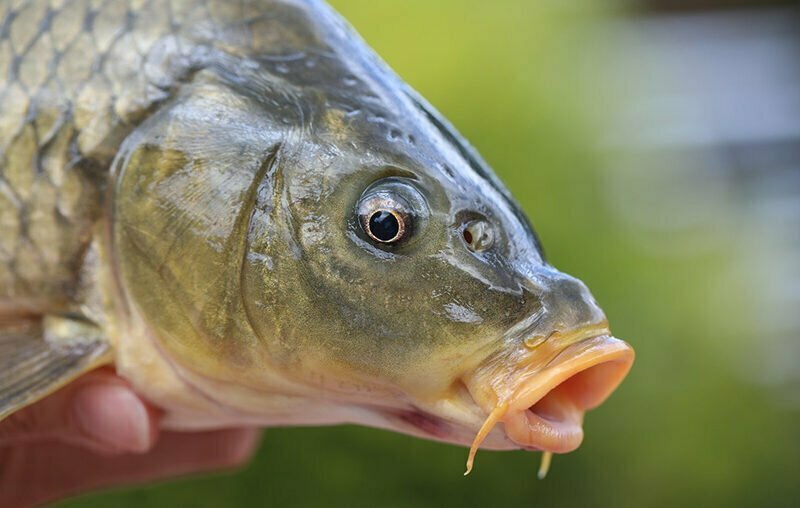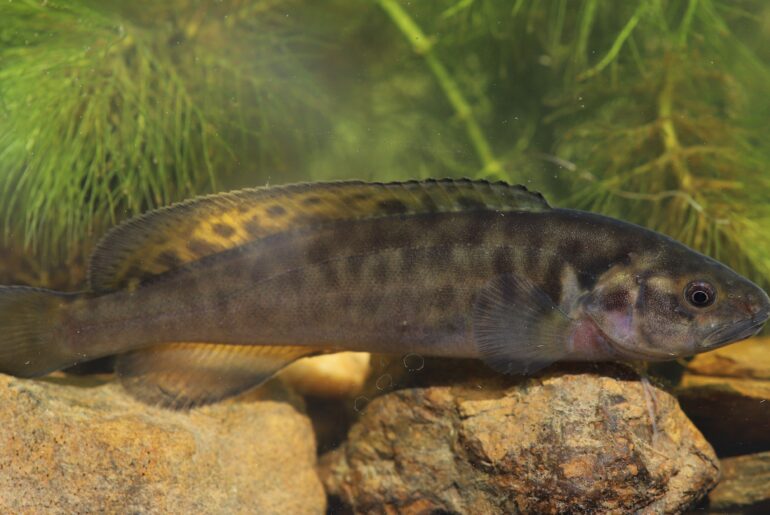Scientists have been able to estimate the biomass and energy that the invasive Common Carp Cyprinus carpio (carp) species have absorbed and locked away from Australia’s ecosystems and food webs, reflecting the amount of energy and resources unavailable for native species. These findings are useful for tracking river and ecosystem recovery, setting appropriate management and policy targets and focusing carp control strategies to support native fish species recovery.
Impacts of carp
Carp are considered one of the world’s most invasive fish species by the International Union for Conservation of Nature. In particular, south-eastern Australia’s waterways have been devastated by the introduced fish species, and they can occur in most aquatic habitats, ranging from rivers, estuaries and wetlands to lakes and irrigation networks.
The impacts of the species can be felt in decreasing water quality, decreasing native fish numbers and increased pressure on fishing and irrigation practices. It is estimated the damage caused by carp is around $200 million annually. The map below shows the extent of the spread of carp on the Australian continent.

The key impacts of carp in Australia have been identified by the National Carp Control Plan:
- Carp modify waterways by sucking up mud. This stirs up silt and muddies the water. This has significant consequences for aquatic vegetation as the muddy water blocks sunlight getting through to underwater plants and inhibits their sprouting. This has further consequences for native plankton, aquatic invertebrates, waterbirds and native fish.
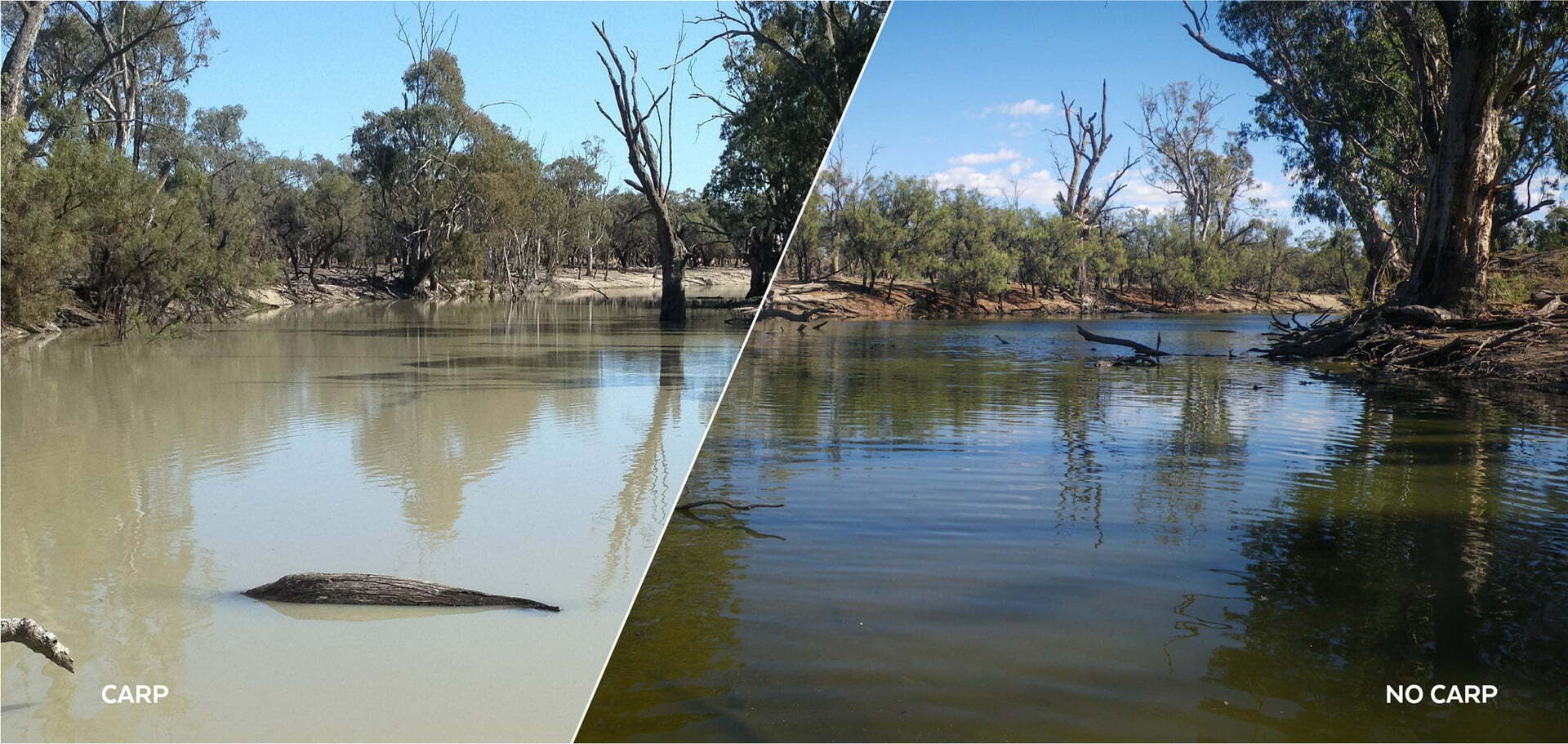
- Carp’s feeding activities lower water quality and increase water nutrient levels. Carp feed on zooplankton, which disrupts the food web and ecosystem of Australia’s waterways. Zooplankton naturally feed on microscopic planktonic algae, however, due to carp reducing their presence algal blooms have increased. Blue-green algal blooms have grown in abundance.These algal infestations are harmful to ecological health, animals and humans, as blue-green algae absorb oxygen as it sinks to the bottom of a river, especially in stagnant water. This deoxygenated water is not a viable living condition for native fish, and harms native vegetation.
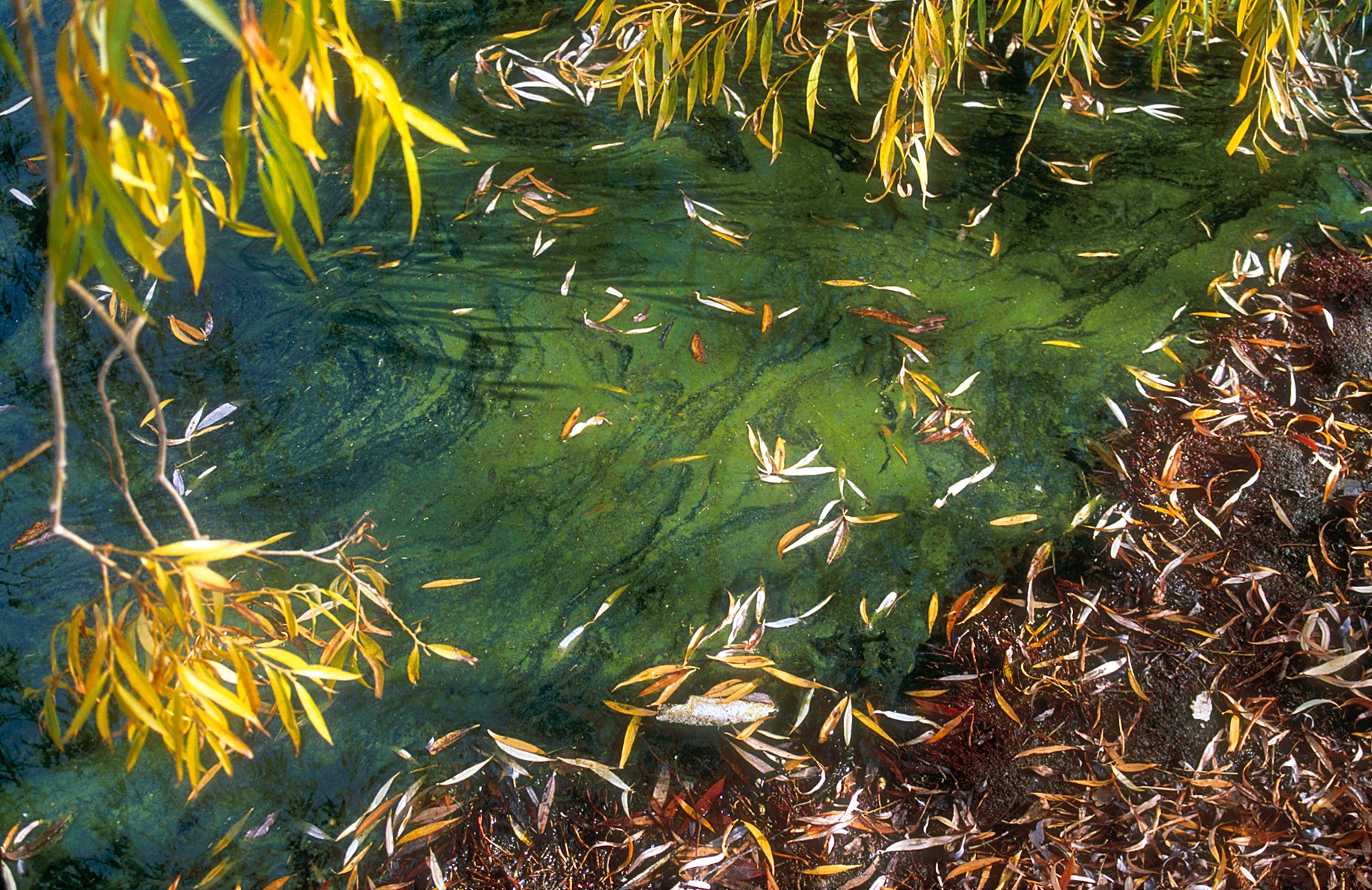
- Carp can be described as ‘resource hogs’ as they take food and habitat from native fish, particularly smaller fish.
- Recreational and commercial fishing practices are also harmed by carp fish populations. Fishers primarily aim to catch native fish but the overpowering presence of carp in south-eastern Australia’s river basins means this is becoming more difficult.
Carp control
Research into managing carp abundance around Australia has found that biological methods of control could be effective in reducing these impacts, boosting native fish biomass and improving water clarity and quality. The National Carp Control Plan is looking into the possibility of using a virus specific to the carp species (known as Cyprinid herpesvirus 3 or koi herpesvirus) to control population numbers without harming other species. It causes high death rates (around 90%) in common carp and no known effects have been found on other species and importantly does not have an impact on native fish species.
There are many issues with releasing the virus into wild populations that have prevented its use so far. These issues include:
- National and international biocontrol regulations
- The virus itself – requires a temperature range of 18-28C and the potential of carp developing immunity and virus-resistance
- The extensive clean-up requirements of dead fish
- Quick carp re-colonisation after an outbreak
- Conservation of threatened species – the impacts on asymptomatic carrier fish are still unknown
- Impacts on food webs
- Impacts on commercial and recreational fishing
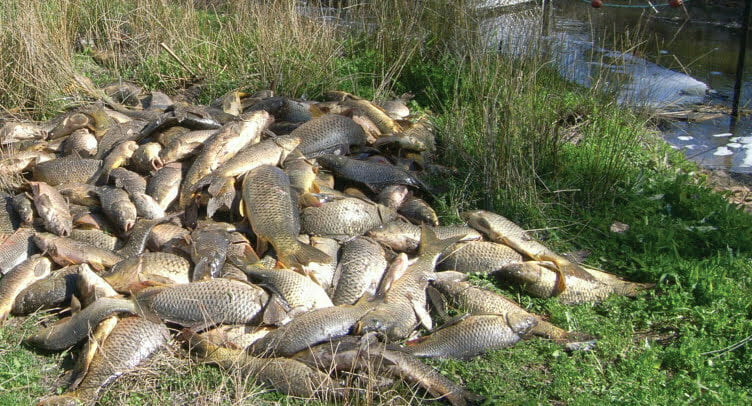
Furthermore, in order to determine if the virus can be released into the population and to inform planning and risk management, scientists need more data on carp populations. Research quantifying the total biomass of carp around Australian was undertaken in 2020 to support and inform these concerns and strategic planning, and to help managers prioritise national and local carp control strategies, set appropriate objectives and track river recovery.
Back to biomass
Biomass is used by scientists to measure fish populations more than abundance measurements. Abundance is a measurement of the numbers of fish, whereas biomass looks at the weight mass of the species in a location. Biomass is defined as the “estimated total weight of a given organism in a certain area at a given time” (Continental threat: how many common carp are there in Australia? Stuart et.al, 2020). Biomass is the preferred measurement as it demonstrates the amount of energy that has been absorbed into the species, and hence removed from other species in the food web.
The 2020 study by Stuart et al. measured 4831 sites across Australia to estimate the total biomass and spread of carp across the continent and in specific rivers and waterways. Results of the biomass density differed for each location, due to differences in salinity, altitude or location, however, overall the study found that carp are present in 17% of Australia’s waterways. South-eastern Australia makes up 96% of the country’s carp biomass, where the fish species is present in 92% of aquatic habitats. The lower Murray River in South Australia had some of the highest biomass estimates at around 550kg per hectare, as its habitat is optimal for carp (slow-flowing weirs and permanent wetlands), whilst the Glenelg River had a much lower biomass density (42kg per hectare). The study estimated the total biomass for Australia’s aquatic habitats is 215,456 tonnes, or around 200 million fish.
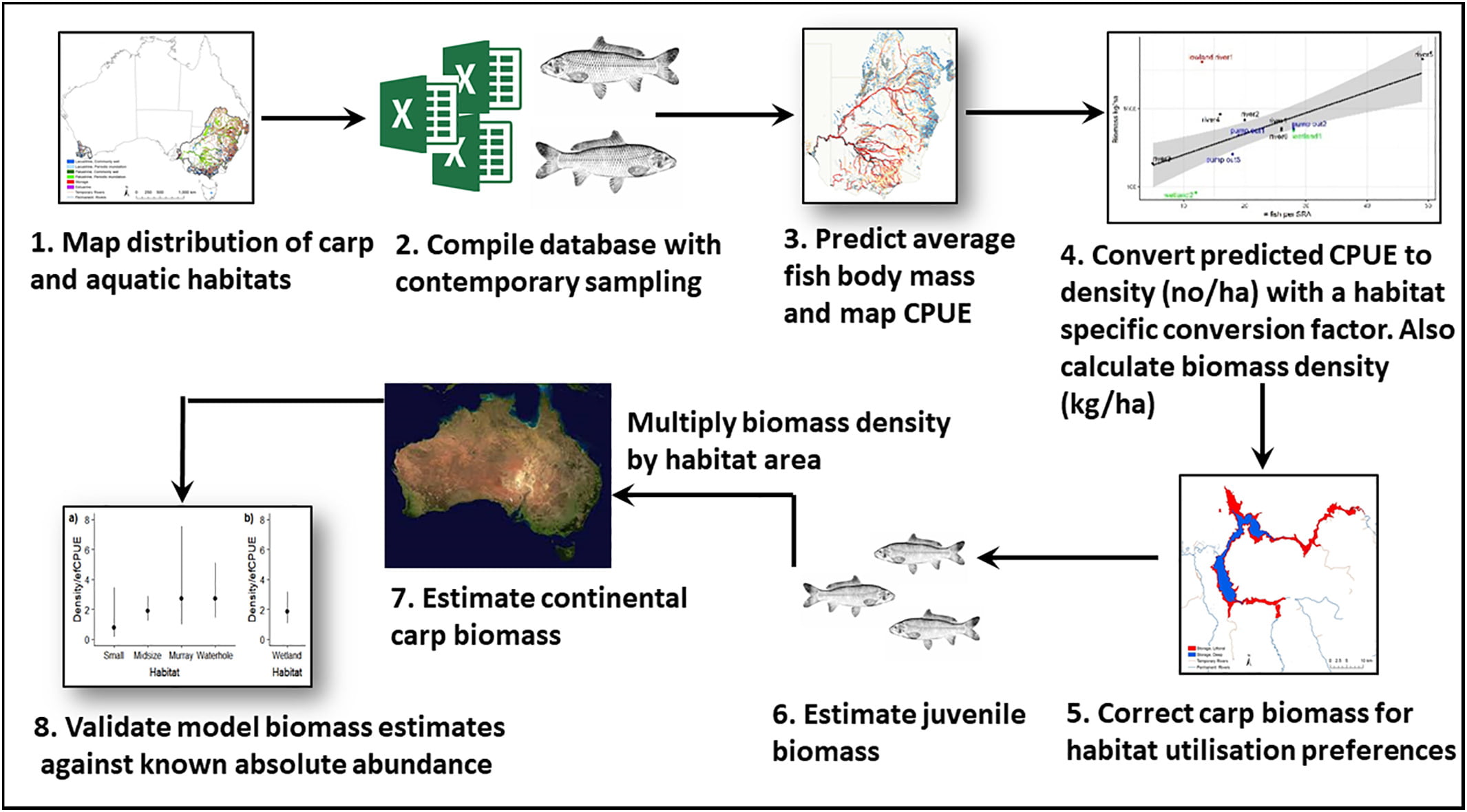
This new finding and method for estimating carp biomass is significant for scientists to evaluate the feasibility of releasing the carp herpes virus in populations around Australia, as it provides a better understanding of the location and extent of spread of carp biomass on a continent-scale and also specifically for river reaches and wetlands. In particular, this indicates which rivers have a level of carp that causes environmental harm, and hence need increased levels of control and management to reduce population numbers.
